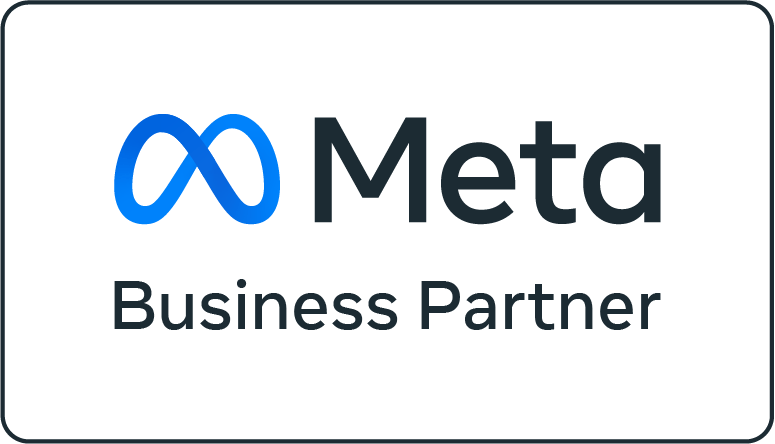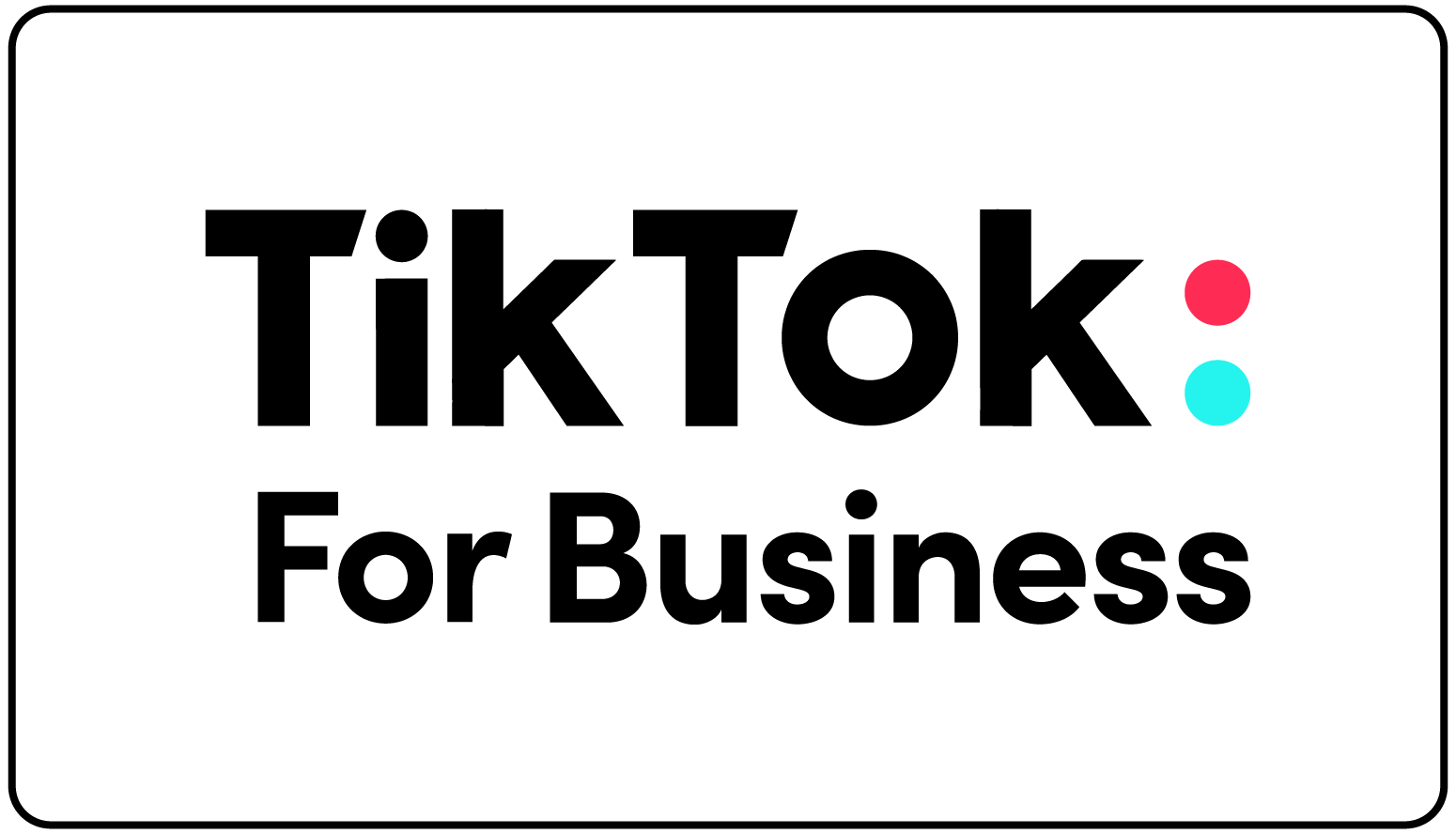The Cookieless Future for Digital Health Ads
The digital marketing landscape is rapidly transitioning towards a cookieless future, as increasing privacy concerns and stringent regulatory standards such as GDPR and CCPA drive this change. This seismic shift away from third-party cookies marks a pivotal moment for healthcare advertising. This challenges the traditional methods of targeting and tracking that digital health trends and healthcare SEM strategies have long relied on.
For digital health companies, this evolution opens a spectrum of unique challenges and opportunities. With third-party cookies declining, healthcare marketers must transition to privacy-respecting, personalized medical ads through new data-driven methods. This change not only affects the strategy and execution of telehealth marketing campaigns. It also reshapes the broader approach to healthcare paid search campaigns.
Embracing this cookieless future demands innovation and adaptability, urging healthcare marketers to explore fresh methodologies in healthcare PPC and other digital advertising avenues. It’s a compelling call to action for the industry to leverage new technologies and strategies to continue reaching audiences effectively within this new privacy-first framework.
The Current State of Digital Health Advertising
Digital health companies traditionally heavily rely on third-party cookies to target and retarget ads effectively. These cookies play an integral role in building comprehensive user profiles. They allow personalized healthcare ads strategies and improve healthcare paid search campaigns. The pronounced reliance on this method led to significant disruption in the landscape with the introduction of Apple’s App Tracking Transparency (ATT) framework in iOS 14.5. This feature imposed limitations on how advertisers, including those from major platforms like Meta, could track users across apps and websites. This marks a critical escalation in privacy-focused changes within the industry.

The digital advertising landscape is changing significantly as major browsers, including Google Chrome, plan to phase out third-party cookies. This shift, expected to reshape the industry by 2024, indicates a move towards more privacy-conscious web browsing experiences. Google’s decision particularly impacts digital health ads delivery across the internet due to Chrome’s significant market share influence. Adobe offers a comprehensive overview of this shift here, emphasizing the transformative impact on marketing strategies.
Furthermore, digital marketing expert Neil Patel discusses the implications of these changes for digital advertisers here. Patel highlights how the third-party cookie deprecation requires a pivot to new marketing techniques that rely less on personal tracking and more on aggregated or anonymized data. This transition presents both challenges and opportunities for healthcare marketers to innovate within their SEM and PPC strategies. This ensures that their campaigns remain effective even as the digital landscape evolves towards greater privacy for users.
These developments prompt digital healthcare providers to reassess and revamp their digital advertising strategies. They shift away from traditional cookie-dependent tactics toward more resilient, privacy-forward approaches.
Why Cookies Are Going Away
The digital marketing world is steering away from third-party cookies primarily because a growing demand for more privacy-focused web browsing experiences drives this shift. Stringent privacy regulations such as the General Data Protection Regulation (GDPR) in Europe and the California Consumer Privacy Act (CCPA) in the United States significantly influence this change. These laws mandate more transparency and user control over personal data. They push the industry towards methods that respect user privacy without compromising on the effectiveness of digital campaigns.

In the wake of these changes, alternative web browsers like Brave gain popularity due to their privacy-centric approach. Brave, which integrates privacy features directly into the browsing experience and supports decentralization and cryptocurrency ecosystems. They represent a broader shift towards securing user data and enhancing user control. This trend highlights the public’s growing concern about data privacy and how online platforms handle personal information. You can find more information about Brave and its privacy features their official website.
Additionally, it’s crucial to understand the distinction between first-party and third-party cookies. First-party cookies are created and stored by the website a user directly interacts with (e.g., website settings, login status). They’re generally considered safer and less invasive, crucial for a smooth user experience. Typically, they’re not shared with other sites. In contrast, third-party cookies are created by domains other than the one the user is visiting directly. They are often used for tracking and online-advertising purposes, and are shared across various sites.
Third-party cookies are being phased out because they can compile detailed profiles of users’ browsing habits without their explicit consent, raising significant privacy concerns. The deprecation of these cookies is a response to both consumer advocacy and regulatory pressure, aiming to create a more secure and privacy-respecting online environment.
Cookieless Future for Digital Health Ads: Meta Ads
As digital health marketers adapt to changes in healthcare ads, mastering Meta ads in a cookieless environment is essential. One of the most effective tools at their disposal is Meta’s Conversions API (CAPI), which enables more privacy-focused, server-side tracking. This tool helps bridge the gap left by the deprecation of third-party cookies by transmitting data directly from servers to Meta. As a result, it enhances the accuracy and reliability of ad conversion tracking. More information on implementing Conversions API you can find here.
Additionally, Google’s tools like Google Tag Manager (GTM) play a vital role for digital health companies looking to maximize signal pass-through in their online campaigns. GTM facilitates the management of website tags without editing the code, providing flexibility and precision in tracking conversions, site analytics, and more. This proves particularly beneficial for healthcare paid search campaigns, allowing for refined data collection that respects user privacy. Learn more about using GTM here.
To further enhance the effectiveness of Meta ads, digital health marketers should prioritize and optimize around on-platform signals. Leveraging tools like Facebook’s native forms and interactive questions significantly qualifies and segments traffic, ensuring more accurate ad targeting. An exemplary case study by Matchnode on Bicycle Health illustrates the successful implementation of this strategy. The study shows how tailored questions improve lead quality and conversion rates. Check out the case study here.
Additional strategies include:

Dynamic Creative Optimization (DCO): This technology enables automatic testing and adjustment of ad components based on user interactions, ensuring the presentation of the most effective combinations to potential patients.

Audience Insights: Utilizing Meta’s detailed audience insights can help healthcare marketers better understand their target demographics, tailoring their ads to meet the specific needs and behaviors of their audience, thereby improving engagement and ROI.

Creative Strategy and Testing: In a landscape where “creative is the new targeting,” implementing a robust creative strategy becomes essential. Matchnode’s creative team exemplifies this approach by conducting creative testing at scale and volume, effectively pulling people out of a broad audience. By continuously testing and refining ad creatives, healthcare marketers can capture the attention of their target demographics more effectively, ensuring that their messaging resonates and drives conversions.
By integrating these advanced tools and strategies, digital health marketers can significantly enhance their healthcare advertising efforts on Meta platforms. Adapting to the cookieless future while maintaining effective and compliant advertising practices.
Cookieless Future for Digital Health Ads: Google Ads
The impending deprecation of third-party cookies in Google Chrome marks a significant change for digital healthcare marketing strategies, particularly for those relying on Google Ads. As Chrome holds a substantial share of the browser market, this shift urges healthcare marketers to rethink their approach to healthcare SEM and healthcare paid search ads. To adapt, marketers must leverage Google’s robust suite of tools to maximize data signal transmission in a privacy-compliant manner.
Maximizing Use of Google Tools: Google Tag Manager (GTM) plays a critical role here as it does for Meta and other ad platforms, allowing marketers to manage and deploy marketing tags without having to modify the code. This tool tracks conversions, site analytics, and more, ensuring healthcare ads perform well despite cookie limitations. For an in-depth guide on utilizing GTM, you can visit Google Tag Manager Help.

Performance Max Campaigns: Another pivotal tool is Google’s Performance Max, a “signal-driven” algorithm that leverages on-platform and compliant external data to optimize ad performance across Google’s channels. This feature connects search and social, offering a comprehensive view of ad performance and user interaction across platforms. Performance Max utilizes machine learning to auto-optimize ad placements and bidding, significantly enhancing the effectiveness of digital ad campaigns.

Prioritizing On-Platform Signals: In the absence of third-party cookies, prioritizing and optimizing around on-platform signals becomes even more crucial. This approach ensures that healthcare marketers can still target and engage their audiences effectively by relying on data collected directly from user interactions on Google platforms.

Exploring Enhanced Conversions: Google’s Enhanced Conversions feature is another strategy that healthcare marketers can use to improve the accuracy of conversion measurement. This feature supplements existing conversion tags by sending hashed first-party conversion data from your website to Google Ads in a privacy-safe way. Enhanced Conversions help in better understanding how users interact with ads leading to improved ad optimization.

Utilizing Audience Insights: Finally, leveraging Google Audience Insights can provide healthcare marketers with deep analytical insights into the characteristics of their audience, such as interests and behaviors. This knowledge allows for more targeted and effective healthcare ad strategies, aligning closely with user needs and preferences, which is vital in a cookieless world.
Together, these tools and strategies provide a comprehensive framework for digital health companies to continue leveraging Google Ads effectively, navigating the challenges presented by the cookieless advertwhile maintaining compliance and maximizing ad performance.
Strategies for Navigating the Cookieless Future in Digital Health

Leveraging First-Party Data:
The move towards a cookieless future underscores the necessity for digital health companies to prioritize first-party data. Unlike third-party data, first-party data is collected directly from your audience through interactions with your brand’s digital assets. This data is pivotal for personalizing user experiences without infringing on privacy, as it is gathered with user consent. Digital health companies can enhance first-party data collection by implementing more interactive online experiences, such as personalized health assessments or engaging health trackers. This not only serve to collect valuable data but also improve user engagement and satisfaction.

Contextual and Programmatic Advertising:
With the decline of cookie-based targeting, contextual advertising is making a strong comeback. This method involves placing ads based on the content of the webpage rather than the past behavior of its visitors. In digital health, where the intent is often clear based on the content being consumed (e.g., a medical article on hypertension), contextual targeting can be particularly effective. Simultaneously, programmatic advertising platforms are evolving to offer more compliant solutions that rely on aggregated or anonymized data, without compromising the effectiveness of the campaigns. Health-specific Demand-Side Platforms (DSPs) are now leveraging advanced algorithms to place ads in the most relevant online environments. For more on health-specific DSPs, check out this resource on Programmatic Advertising in Healthcare.

Innovations and Alternatives to Cookies:
Innovative solutions like Unified ID 2.0 are being developed to address the challenges posed by the deprecation of third-party cookies. This system uses encrypted, hashed identifiers based on user-consented data, offering a more privacy-focused approach to personalization and tracking. For more information about Unified ID 2.0, see The Trade Desk’s Unified ID Solution. The integration of AI and machine learning is also transformative. This allows advertisers to analyze vast amounts of anonymized data to discern patterns. This helps target ads effectively without relying on personal data.

Privacy-First Advertising Models:
In this new era, building trust through transparent advertising practices is more crucial than ever. Digital health companies must ensure not only compliance with privacy laws but also transparency with users about how data is collected and used. Google’s Privacy Sandbox is a notable initiative aiming to develop a set of open standards to enhance privacy on the web, allowing for personalized advertising without compromising user privacy. Learn more about Google’s Privacy Sandbox here. This and similar frameworks are essential for digital marketers to consider as they craft their future strategies.
By adopting these strategies, digital health companies can effectively navigate the challenges of a cookieless future. They also ensure their advertising remains impactful and compliant. This approach respects user privacy while enhancing the trust and reliability of digital health services in the eyes of consumers.
The Role of Regulations and Compliance
Strict Adherence to HIPAA and PHI Considerations
HIPAA regulations play a critical for digital health companies as they dictate how PHI can be used in advertising. PHI includes any medical record that can be used to identify an individual, and its protection is crucial. Digital health firms must ensure PHI used in ads has consent and complies with HIPAA’s privacy and security rules. The involvement of legal teams is essential in making decisions about how PHI is handled, whether through advertising or APIs, to ensure adherence to these laws. More information on HIPAA compliance can be found through the U.S. Department of Health & Human Services.
Federal Regulations from the FDA and FTC
In the United States, the Food and Drug Administration (FDA) and the Federal Trade Commission (FTC) provide regulatory frameworks that guide how medical products and services can be marketed. The FDA focuses on ensuring that drug and medical device advertisements are truthful, balanced, and accurately communicate the risks and benefits. The FTC regulates the advertising of non-prescription drugs and other health services, ensuring they are not deceptive or misleading. Compliance with these regulations is critical to avoid legal repercussions and maintain consumer trust. For guidelines from the FDA related to advertising, you can visit FDA’s Advertising and Promotion. For FTC’s guidelines, check Advertising FAQ’s: A Guide for Small Business.
State-Specific Legal Considerations
Adding another layer of complexity, legal considerations for digital health advertising often vary by state. This means a strategy that is compliant in one state might not be in another. This requires digital health companies to be extremely vigilant and adaptive in their marketing approaches. State-specific variations require digital health firms to grasp local regulations fully, often leading to tailored advertising strategies for different regions.
Utilizing Audience Insights
Finally, healthcare marketers can leverage Google Audience Insights to gain deep analytical insights into the characteristics of their audience, such as interests and behaviors. This knowledge enables them to craft targeted and effective healthcare ad strategies. It aligns closely with user needs and preferences, crucial in a cookieless world.
MORE INFO
The cookieless marketing future for digital health ads is a complex topic, and here is some further reading we recommend:
- WICG/floc on GitHub: This repository offers technical discussions and documentation on the Federated Learning of Cohorts (FLoC), explaining how this technology aims to replace third-party cookies by grouping users with similar browsing habits for ad targeting purposes. You can explore further details here.
- “>Google’s Privacy Sandbox Blog Post: Google outlines its Privacy Sandbox initiative to create a more private web by phasing out third-party cookies and introducing new technologies for user privacy and personalized advertising without compromising personal identity. Read more about this initiative here.
- DBS Website Blog on Website Cookies and Data Privacy: This blog post discusses the role of website cookies in digital marketing and the impact of increasing data privacy regulations on their use. It provides an overview of how businesses can adapt to these changes. Learn more here.
- Jon Loomer on Chrome’s Elimination of Third-Party Cookies: Jon Loomer analyzes how Google Chrome’s decision to phase out third-party cookies will affect advertisers using platforms like Meta, focusing on the challenges and potential strategies to adapt. You can find detailed insights here.
Preparing for the Future
As the digital landscape evolves towards a cookieless environment, digital health marketers must adapt their strategies to stay ahead. This transition not only requires complying with new privacy regulations. It also means adopting innovative advertising techniques that respect user privacy while maintaining effectiveness.
Embrace First-Party Data and Customer Relationships
Building robust first-party data capabilities is crucial. Digital health marketers should focus on strengthening relationships with their target audiences by offering value in exchange for data consent. This could include offering health tips, newsletters, or personalized health assessments that encourage users to share their information directly. By owning and controlling this data, companies can tailor their marketing efforts more accurately and comply with privacy laws.
Test and Adapt New Advertising Strategies
The cookieless future will favor those who are agile and willing to experiment with new strategies. Testing ID-free solutions can be a valuable approach. They do not rely on cookies and instead use machine learning algorithms to predict user behavior based on non-personal data. Digital marketers should also focus on contextual marketing as a key area. This technique places ads based on the content being viewed rather than the user’s past behavior. It aligns well with health-related content where reader intent is usually clear.
Utilize Advanced Technologies
Leveraging technologies like Artificial Intelligence (AI) and Machine Learning (ML) can help analyze large sets of anonymized data to uncover trends and user needs without compromising individual privacy. These technologies can predict user behavior and help tailor marketing messages at the right time and place, making advertising more relevant and effective.
Continuously Monitor Performance and Adjust
With any new strategies, continuous monitoring and optimization are essential. Digital health marketers should use advanced analytics to track the advertising campaign performance and adjust their strategies based on real-time data. This approach enables quick pivots and refinements, ensuring that marketing efforts always align with the latest consumer behaviors and regulatory changes.
Educate and Train Teams
As new technologies and strategies emerge, it’s vital for digital health companies to keep their marketing teams updated through regular training and development sessions. Understanding the latest digital marketing trends, privacy regulations, and technological advancements is key to maintaining a competitive edge.
By focusing on these areas, digital health marketers can effectively navigate the challenges of a cookieless web and continue to engage their audiences in meaningful and compliant ways.
Conclusion
Digital health companies encounter challenges and opportunities amidst the shift to a cookieless future in digital advertising. These companies must adapt to new privacy-focused advertising methods, such as leveraging first-party data, contextual advertising, and ID-free solutions. These strategies meet privacy regulations while boosting personalization and effectiveness in digital health marketing.
Furthermore, this transition presents a significant opportunity for innovation within the health sector. Embracing advanced technologies and new advertising paradigms can enhance both the relevance and privacy of digital health companies’ advertising efforts. This enables them to adapt effectively to evolving market needs. This is not just about compliance. It’s about leading the way in creating a more secure and trustworthy digital environment for consumers.
In conclusion, the cookieless isn’t a hurdle for digital health companies. Rather a catalyst for them to refine their marketing strategies and build deeper, trust-based relationships with their audiences.
Innovating responsibly and prioritizing user privacy, the health sector can establish ethical and effective digital advertising standards.




